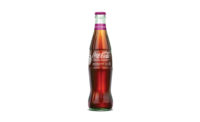Performance beverage market sees impact of low-calorie
Clean label, protein trends continue to proliferate

The CELSIUS Originals line added Kiwi Guava. The fitness drink is designed to provide healthy energy and contains the proprietary thermogenic MetaPlus formula, which accelerates metabolism, burns fat and boosts energy, when combined with exercise, the company says. (Image courtesy of Celsius Holdings Inc.)
Just as spectators will ask how low can you go when participants are facing off in a limbo challenge, consumers are asking the same of food and beverage manufacturers. However, these requests have spread beyond traditional low-calorie refreshment to also include sports nutrition formulations.
“People are looking for all-natural, low-calorie, low-sugar beverages that are functional,” says Penny Portner, director of marketing for Minneapolis-based Bioenergy Life Sciences Inc. (BLS). “They look at the ingredients on every label very closely. They, especially millennials, do more research on functional ingredients to make sure they are safe and proven to be effective. They don’t just believe the claims on the labels.”
Ardie van Lankveld, global market manager of sweet for Corbion, Lenexa, Kan., also highlights the impact that sugar content is having on the performance beverage market. “Of course performance beverages still need to provide carbohydrates and taste good, but sugar is undesirable for many consumers now, even in this category,” he says.
The emphasis on sugar reduction also could have an impact on the use of other ingredients, experts note. “We are also seeing a lot of emphasis on reducing sugar,” says Vicky Fligel, senior product manager of functional systems at Glanbia Nutritionals, Chicago. “Specific to performance beverages is that it is all about emphasizing the protein message.”
Sustained fuel
Although sugar reduction has begun to impact the performance beverage market, ingredient suppliers highlight that it’s not about eliminating sugar, but selecting the ones that best support sports nutrition.
“Beverage makers — from international brands to start-ups — are continuing to investigate new ways to deliver on consumer expectations,” says Jon Peters, president of BENEO Inc., Parsippany, N.J. “In the past, most popular sports nutrition beverages have been aimed at a highly athletic market focused on carb burning and creating energy during exercise. These products, however, traditionally contain high-glycemic carbohydrates like maltodextrin, glucose syrup and sucrose. These carbohydrates release glucose into the bloodstream at a fast rate.
“While this is fine for those in need of instant energy, it isn’t ideal for those looking for endurance in their training and day-to-day sports activities, or for achieving balanced energy levels throughout the day,” he continues. “For these consumers, a low-glycemic carbohydrate that supplies its energy in a more steady way is preferable, as it doesn’t just sustain energy, but also promotes fat burning and supports fuel management in sports as well as weight-loss goals.”
To fulfill this need state, BENEO offers Palatinose, an isomaltulose, low-glycemic carbohydrate.
“Palatinose provides full carbohydrate energy in a sustained way, eliminating unwanted ‘boost and crash’ blood sugar spikes and it helps to burn fat more effectively,” Peters explains. “An increased fat burning rate also means that active consumers can draw on their carbohydrate reserves for longer. These physiological benefits make Palatinose ideal for use not only in beverages aimed at endurance athletes but also for the growing number of casual fitness users or for those who are beginning to get active.”
Peters adds that the market for casual fitness consumers continues to grow, citing 2017 research from GlobalData. “Analysts from GlobalData recently commented that next to elite athletes and bodybuilders, there has been an increase in casual fitness users looking to supplement an active, healthy lifestyle with sports nutrition products,” he says. “At present, despite the forecasted rise in obesity, there are few products targeting obese or overweight consumers. However, GlobalData predicts this will change and we will see more product launches aimed at the overweight, as well as women and older consumers.”
BLS’ Portner adds that needs of today’s consumers have given way to the hybrid beverage market as well as the ingredients that support those products.
“I think because the millennials are looking for beverages that not only taste good and are convenient but offer multiple health benefits as well, this created room for performance ingredients to become a part of hybrid beverage formulations,” she says. “They don’t just want something that has basic vitamins and minerals, but they want multi-functionality, more energy, mental clarity, antioxidants, workout recovery, etc.”
To support sustained endurance as well as recovery, BLS offers its Bioenergy Ribose. “Bioenergy Ribose is the building block of ATP, the source of all cellular energy, so it helps the body build energy faster to keep energy levels steady and sustainable,” Portner explains. “With this sustainable energy source, you experience greater endurance, improved physical performance, reduced muscle soreness, cramping and stiffness, healthier heart function, and better metabolism. Bioenergy Ribose also alleviates or prevents acute mountain sickness symptoms, allowing you to stay active when at various elevations.”
An evolutionary market
Although the purpose remains the same, ingredient suppliers highlight how the performance beverage market has evolved in recent years.
“[A] range of other factors is shaping today’s market,” Corbion’s van Lankveld says. “Convenience is definitely one, as the sector is growing beyond ‘hardcore’ exercisers. As more people have to incorporate exercise into their busy everyday routines, and can’t dedicate large chunks of time to working out or training regimes, they need to be able to rehydrate and obtain their electrolytes and carbohydrates quickly, with smaller and more convenient pack sizes.”
Georgia Dina Konstantopoulos, communications manager for FrieslandCampina Ingredients North America Inc., Paramus, N.J., also points to the changes seen throughout the performance beverage market.
“If you had a look at the functional beverages section at the convenience store a few years ago, you would mainly see bright-colored energy drinks, some protein ready-to-drink beverages and lots of powdered beverage tub options for the hardcore performance nutrition consumer,” she says. “The rise in health and nutrition awareness as well as the mainstreaming of the performance nutrition sector, have led to the introduction of various functional ingredients for the body and mind. That’s also the reason why we see so many herbs, botanicals and superfoods such as spirulina, ginger, turmeric, entering the beverage market and slowly making their way into more and more beverages.
“There’s also more of a move toward more natural and cleaner-label ingredients,” she continues. “The simpler an ingredient is and sounds, the more appealing it is to the consumer, who wants to have a more of a farm-to-table product. The format of a lot of products has also changed; consumers prefer more on-the-go, convenient products that don’t take up that much space.”
This migration has resulted in beverage-makers developing products that are designed to check-off a range of product attribute boxes.
“Beverage companies have been challenged to adapt and deliver beverage formulations that meet a range of expectations, including clean labels, real health benefits and unique flavors,” says Patrick Luchsinger, marketing manager of nutrition for Ingredion Inc., Westchester, Ill. “Consumers are also increasing their intake of ingredients they consider to be healthy, like protein and prebiotics, and are looking for drink options that align with their lifestyles. Product development has continued to evolve with innovative beverage options offering value-added nutrients with improved sensory profiles.”
For example, Luchsinger points to the momentum of plant-based food and beverages. “Consumers are increasingly looking to beverages to play new roles in their diets and health routines,” he says. “Drinkable breakfasts and the ‘snackification’ of beverages are fueled by consumer interest in nutrition and performance drinks that act as meal replacements and guilt-free snacks.
“New ingredients for proteins including pea, faba [bean] and lentil are gaining interest from consumers and market share,” Luchsinger continues. “Consequently, products such as plant-based dairy alternatives have had 20 percent growth over last year. Plant-based milk is up approximately 3 percent over last year.”
Glanbia’s Fligel also points to the benefits of protein when it comes to performance beverages.
“Protein is a large mainstream trend, more brands are focused on the protein message,” she says. “Big brands are creating specific protein beverages and sports brands (performance drinks) are starting to position their product in mainstream markets through different distribution channels. We are also seeing a merging of juice and dairy drinks and other formats. Consumers are seeking beverages that can do it all and packaged in a small convenient format driving the trend for hybridization.
“Specific to performance beverages, it’s all about driving up the protein level and the quality of protein,” she continues. “We are also receiving requests for cleaner label and cleaner ingredients that can meet more natural claims for example, non GMO and organic. There is also a focus on plant proteins and alternative protein sources to dairy.”
FrieslandCampina’s Konstantopoulos explains that the company’s performance nutrition team conducted research to learn what sporting enthusiasts and athletes desire for their recovery and performance needs.
“Our consumer research showed that consumers want ‘less-processed’ and ‘label-friendly’ solutions that would help them reach their fitness goals,” she says. “We do know that casein prior to sleep is beneficial for muscle protein synthesis, but so far there was no available option in the market that ticked all the right boxes based on consumers’ needs. This is what sparked us to develop Micelate Prestige; a premium quality, native micellar casein isolate, derived from high-quality milk. It’s cold-processed and native, which means the structure of the micelle is comparable to that of fresh milk. This natural, long-lasting protein supports muscle mass and strength gain augmentation during sleep or when a longer recovery period is available. This makes Micelate Prestige perfectly suited to support recovery needs of active consumers.”
The company also offers Nutri Whey Native to fulfill consumers’ requests need for natural and less-processed solutions. “Most whey proteins undergo significant processing, starting with cheese whey as raw material,” Konstantopoulos says. “By contrast, Nutri Whey Native is derived directly from fresh raw milk, with minimal processing and ceramic micro-filtration as purification. So the final whey protein will stay in the original whey protein form found in fresh milk.”
Although most commonly associated with recovery, Ingredion’s Luchsinger points to the growing evidence about the benefits of protein to active workouts. “Endurance athletes historically have focused more on optimal carbohydrate intake and less on protein consumption,” he says. “However, this is changing due to the increased evidence of protein benefits in optimal muscle performance and restoration. Lack of sufficient protein can have a negative impact on endurance athlete’s performance. Endurance athletes need sufficient protein to repair and grow lean muscle mass. Insufficient dietary protein lengthens muscle recovery time, which can lead to susceptibility in muscle fatigue and muscle weakness.”
No matter what consumers’ performance beverage needs are, experts expect more evolution in this market. “Consumers are gravitating toward beverages with performance ingredients and functional benefits to meet the desire for nutritional goodness that also taste great,” Luchsinger says. “Plant-powered foods and beverages continue to grow in the market. We are experiencing an evolution from simple vitamin or energy-boosting beverages to a more plant based, holistic, and health management focus, including protein, to meet the current needs of consumers today.” BI
Looking for a reprint of this article?
From high-res PDFs to custom plaques, order your copy today!






